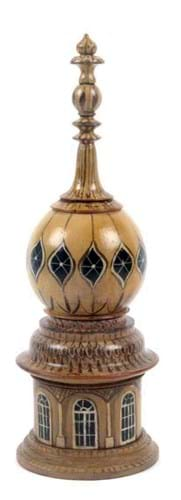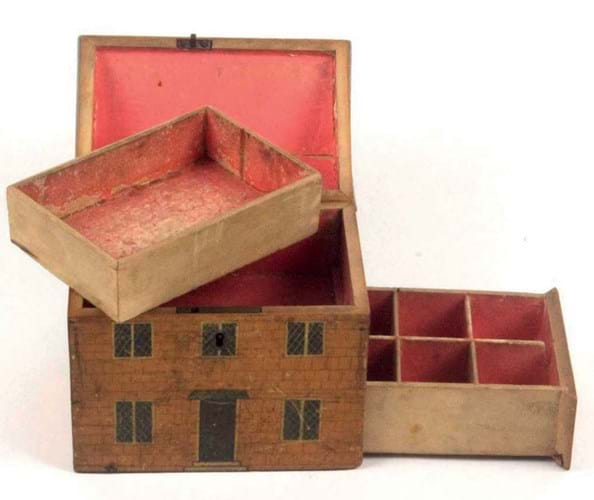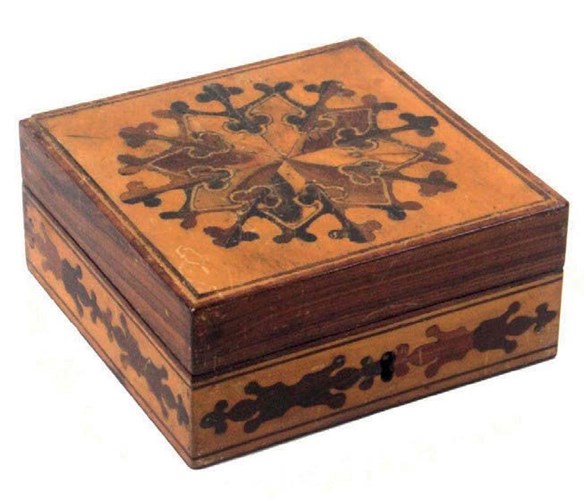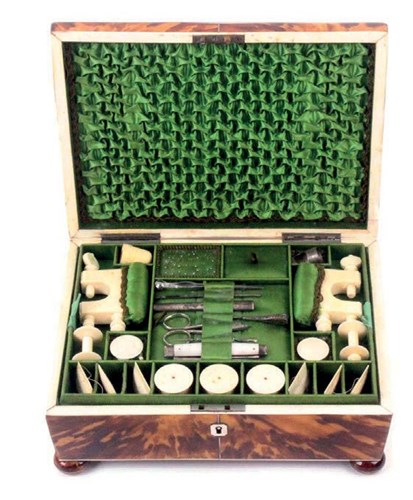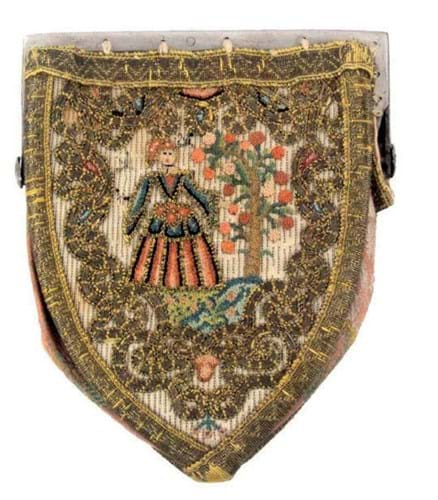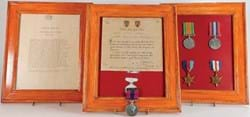“I’ve been described as a serial auctioneer. I’ve been an auctioneer since I was 18 and I did question if I could cope with the loss of control. Handing the bidding process over to the system is quite terrifying but it has been a revolution and a revelation. It has become stress free.”
Robert Bleasdale is a timed-online convert. Bleasdales, launched 14 years ago after a long career with Phillips and Bonhams, last held a ‘physical’ auction of sewing antiques and Tunbridgeware at the Lord Leicester Hospital, Warwick back in November 2019.
Since then – first through necessity because of Covid, later because of convenience – his sales have been conducted remotely.
Cost benefits
The timed online auction, a method of buying and selling so familiar to the eBay generation, was first embraced as a cost-effective way of selling middle-market merchandise by Sotheby’s, Christie’s and Bonhams.
Before lockdown, it was relatively small scale. Today it accounts for as much as half of the material by volume sold by ‘the big three’.
It is also changing the way a small and highly specialised auction business – Bleasdale is effectively a one-man band – can operate.
The very old rules apply (market freshness, keen pricing and appealing merchandise are key) and it helps that Bleasdales works in a field of small, portable items. The in-house packing and mailing service operates at cost with many parcels charged at £8 each.
“Our buyers know they aren’t going to be hammered by postage costs”, says Bleasdale.
The Warwick firm still produces a printed catalogue for its clients – “to have abandoned the catalogue would have been a step too far” – but the reality is that attendance numbers at the Lord Leicester were down before the pandemic.
“I miss the surrounds of the building and the friendship of the people who were there. But 60-70% of our buyers are international and they rarely visited us in Warwick”, Bleasdale adds.
“The first time people were nervous. Guided by their grandchildren, they adapted because there was no choice. But they too are now converted. It would be insane to go backwards.”
One feature the clients particularly like is the time and flexibility that this format provides. Bleasdale believes there are significant benefits in this regard and ensures the catalogue is available on thesaleroom.com well in advance of the auction’s closing date.
“A contest that lasts for two weeks gives buyers an opportunity to come back in again or to take a failed bid and put the money somewhere else.”
On the final day of the sale, each lot ends at a 30-second interval (the firm sets its bidding increments at £20) and the majority are concluded in the timeframe. However, to prevent the sort of sniping common on eBay, in the event of bids in the final moments, the end time of the lot is automatically extended to allow for further bidding, effectively mimicking the back and forth of a live sale and ensuring all bids can be taken in.
Austen collection part 2
The auctions typically achieve a lot sell-through rate of high 80%s to low 90%s (excluding any aftersales). This was the case again at Bleasdales’ most recent auction, the Summer Sewing Sale, which began on May 31 and ended on June 21 (with a buyer’s premium of 20% and no internet surcharge to buyers – Bleasdales absorbs it and does not pass it on).
The auction was boosted by the second tranche from the collection of Brian Austen, author of Tunbridge Ware and Related European Decorative Woodwares (the revised edition published in 2001). The total collection numbers close to 1000 pieces.
The subject of particular competition was a rare labelled Tunbridge Wells Marquetrie rosewood jewellery box by Robert Russell of Chapel Place, Tunbridge Wells.
As referenced by the black on yellow label applied to the underside of this box, Russell, who undertook work for the Duchess of Kent, claimed to be the inventor of what he called Tunbridge Wells Marquetrie that was ‘analogous to the Tunbridge ware, but of a superior character’.
It adds that ‘No stained or dyed woods [were] used’.
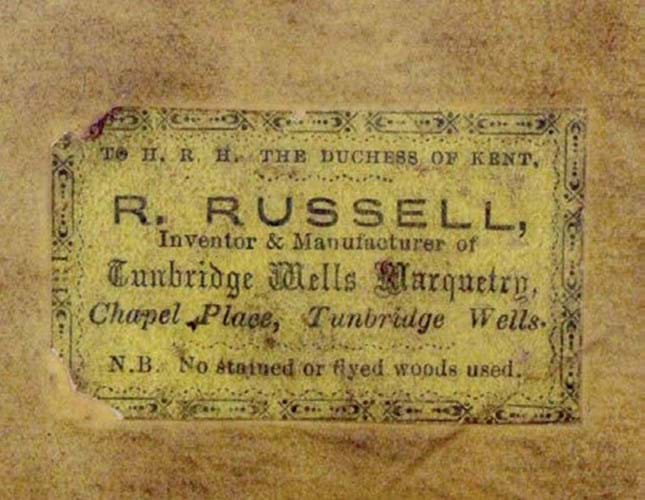
A labelled Robert Russell ‘Tunbridge Wells Marquetrie’ box, £2180 at Bleasdales.
These jigsaw marquetry boxes are for the Tunbridge connoisseur. Relatively few pieces are known, although given the similarity to Sorrento ware, Bleasdale speculates there may be more of it out there masquerading as continental marquetry.
A Russell bird’s-eye maple sewing box had sold in the equivalent sale last year at £3420 and a handkerchief box the previous year at £1420. A core of four or five collectors competed the labelled example offered in June to £2180.
The earlier paint-decorated white wood wares made as tourist souvenirs in the Brighton Pavilion era appeal to a wider audience. Here a three-section sewing companion in the form of a Pavilion dome, c.1820 (pictured top), took £1780 while a cottage sewing box, painted with a pitched tile roof, brick work and trellis glazed windows brought £1500.
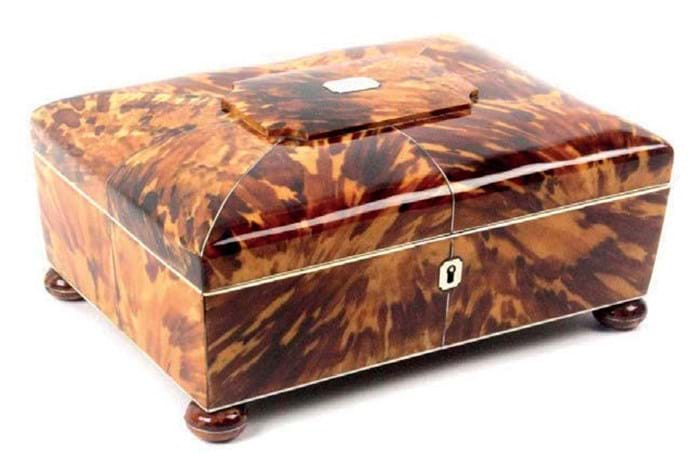
An early 19th century tortoiseshell sewing box with original ivory fittings, £3260 at Bleasdales.
Leading the sewing items was a deluxe tortoiseshell sewing box with original fittings, c.1820, that sold to a private UK collector at £3260.
Probably made by Lund, the interior of green ruched silk was fitted with a selection of accoutrements including a pair of ivory winding clamps, a set of six rectangular thread winders, a set of three reels and a tape measure.
Individually these ivory items could not be sold but Bleasdales successfully made the case to the authorities that they were original and integral to the whole. It was thus granted an ivory licence on the de minimis rule.
Mace marvels
Restoration-period silver needle and thimble cases are rare objects but two examples were offered here as part of a collection built over 30 years. Both assumed the form of a mace with a hinged cover and were typically decorated with leaf scrolls, flowers and strap work. They sold to the same US buyer at £940 and £740.
Another object of vertu with a crossover collecting potential was a late 18th century English enamel bodkin case, scent and thimble compendium. These survive in larger numbers but seldom are they in such good condition. This one, painted with landscape panels to the blue ground with white dot trellis pattern, took £780.
Watch-case samplers, made to tuck inside the pair-case of a pocket watch, are a collecting area of their own. The example here, c.1800, was particularly charming, sewn with the inscription This small trifle kindly take and keep it for the giver’s sake. It was signed ES over a heart. Just 2in (5cm) across, it took £460 from a UK collector.

A watch case sampler, £460 at Bleasdales.
This was one of several very fine examples of Georgian needlework that brought multi-estimate sums.
These included an 18th century silk embroidered purse, worked to one side with a scene of a woman standing beside a tree and to the other with a woman standing holding a flowering branch, which made £1260, and a case enclosing a complete alphabet of 26 miniature Bristol cards sewn in cross stitch.
The latter, perhaps worked as an exercise in an orphanage, took £720 was a collector in Scotland.
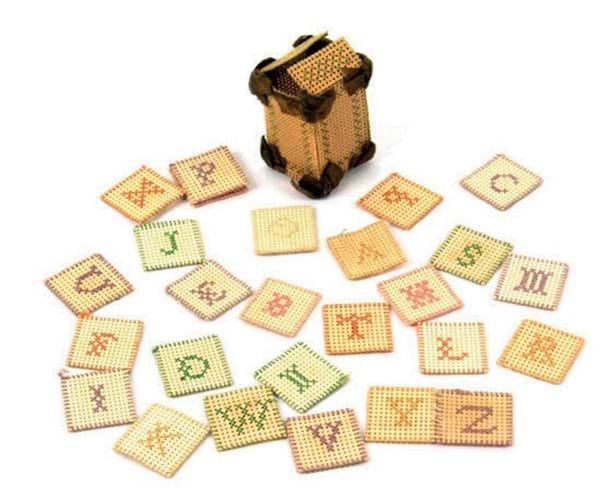
Bristol card case with cross stitched alphabet cards, £720 at Bleasdales.
Nutty about nutcrackers
Leading the sale was a fine English treen nutcracker that arrived alongside a collection of sewing antiques. It sold at £4000 (estimate £500-1000).
Carved as the head of a man with centrally parted hair and beard, the nutcracker was dated 1676.
It will now join the extraordinary collection of early nutcrackers being assembled by Lithuanian businessman Arnas Jurskis – the subject of a Collector Interview in ATG No 2561.
Jurskis, who founded a nut and dried fruit company trading in the Baltic and Nordic countries in 1995, has been collecting nutcrackers for more than 20 years.
He plans to open a museum for his collection of more than 10,000 examples in Vilnius.


